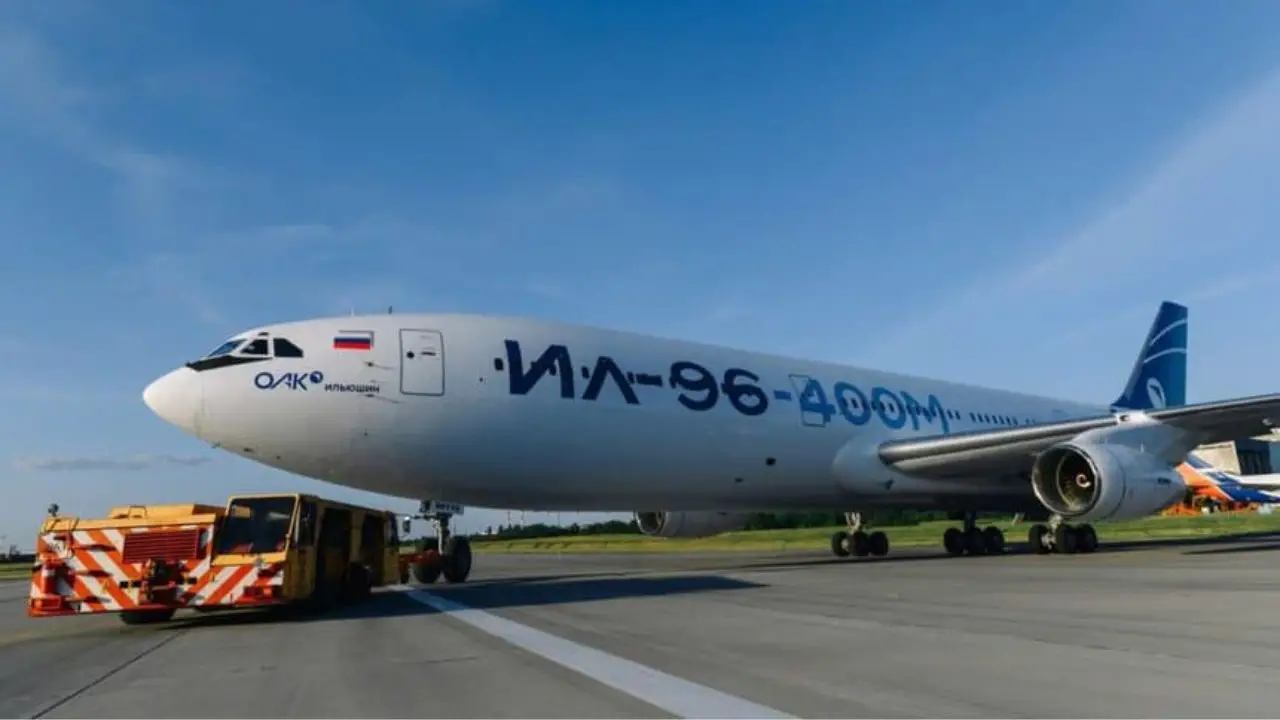Anton Alikhanov, the Russian Minister of Industry and Trade, made a statement on the future of Russian civil aviation at the St. Petersburg International Economic Forum (SPIEF-2025). He said the future of civil aircraft manufacturing in Russia is inextricably linked to the expansion of the model range and the fulfillment of the demand for aircraft of varying sizes and flight ranges. The Il-96-400M is designed to enhance the wide-body segment of the United Aircraft Corporation (UAC) lineup. Simultaneously, the General Director of UAC Vadim Badekha, said in an interview with Rossiya 24 at the SPIEF that Rostec is considering creating an Il-96 aircraft with two domestic PD-35 engines. There are two projects to modernize the aircraft: the first is the Il-96-400M, a modernized version of the four-engine aircraft; in parallel with it, there is an idea of a twin-engine modification.
Anton Alikhanov stated that the Il-96-400M, in conjunction with the MC-21-310, Superjet 100, and Tu-214, will facilitate a nationwide route network and supplant foreign analogues. It is anticipated that the aircraft will enhance the connectivity of passenger transport throughout the nation and the logistics of cargo transportation. Alikhanov underscored that the aircraft will contribute to the advancement of Russian expertise in the development of wide-body, long-haul aircraft. These improvements will enable the modernization of onboard systems and equipment in accordance with current trends, including the greater use of composite materials, the development of aircraft intelligence, and the establishment of a new generation of wide-body aircraft.
The first flight of a prototype of the long-haul Il-96-400M happened in November 2023. Nevertheless, the future of its serial production remains dubious and has elicited skepticism from several experts, despite this milestone. For the past two years, official communications have refrained from discussing the intention to manufacture this modification in large quantities. The Il-96-300 is mentioned in the third edition of the comprehensive program for the development of Russia’s aviation industry until 2030; however, the Il-96-400M is not included.
The Il-96-400M’s serial production plans were impacted by the COVID-19 pandemic, which halted long-haul flights worldwide, and the absence of airline orders, as noted by the office of Deputy Prime Minister Yuri Borisov in 2021. Production would be exclusively arranged for government customers, with two aircraft designated for the “Rossiya” Special Flight Detachment. Rostec affirmed that they had a comprehensive understanding of potential government buyers, stating that the Il-96-400M was initially developed as a “special-purpose aircraft” to be produced in limited quantities, rather than as a mass-market aircraft.
This week, according to a source within the Rostec Corporation, the Il-96-400M passenger aircraft, which are currently in the design phase, may be equipped with a protection system against man-portable air-defense systems (MANPADS) and other missiles with infrared/UV, optical, and radar homing heads. Most likely, this refers to the Russian “President-S” airborne electronic warfare system, which is already installed on aircraft from the Special Flight Detachment. The “President-S” system is implemented in the form of modules that can be mounted both inside the aircraft and on external fuselage hardpoints. The system has been tested on Russian military transport aircraft and helicopters and is currently in use on the Il-76 and Ka-52. It can operate autonomously without pilot or operator intervention: it simply informs the pilot of the attack direction, countermeasures taken, and the remaining defensive resources.
The Russian media in 2022 reported that the Il-96-400M will become a flying laboratory for testing the PD-35 engine family with a thrust of 24 to 50 tons. According to TASS, the first flight of the aircraft is planned for the end of the year.
In December 2023, Denis Manturov, the former Deputy Prime Minister and Minister of Industry and Trade, announced that the Il-96-400M would be manufactured for cargo transportation. The aircraft has the potential to be used for passenger flights in the future; however, it is important to find out the most suitable engine thrust, which is either 26, 35, or 38 tons. Additionally, he observed that the subsequent phase would involve reengining, which involves substituting the four engines with two PD-35 engines to enhance the aircraft’s competitiveness, should transport companies express interest.
Research and development efforts are currently ongoing for a new, next-generation wide-body long-haul aircraft that is anticipated to be introduced after 2030, in addition to the Il-96-400M. The objective of this initiative is to improve the competitiveness of the Russian aviation industry in the global market and further develop technologies. Particularly, the implementation of new materials, enhanced aerodynamics, and enhanced energy efficiency are anticipated. Researchers are also investigating the integration of contemporary flight control systems and the enhancement of automation, as these developments will substantially enhance flight safety and operational characteristics.
Official Website of Youtube Channel – Altitude Addicts
